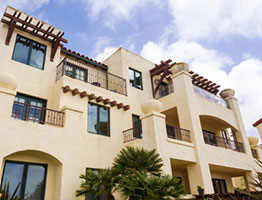Homeowner FAQs
Below are some of the questions we are frequently asked by homeowners.
A thorough termite inspection on an average size house takes approximately 2-3 hours, but can take longer depending on the condition of the house, the inspection of wood patios and decks, or if the house has a lot of wood siding and trim. Teamwork Termite will not cut corners and will inspect all the accessible areas of your attic and subarea, if applicable. We will also inspect the entire interior of the house, the garage, and the exterior of the wood will be visibly inspected, along with tapping of reachable wood.
There are many different types of treatments available; however, fumigation, or, putting a tent over your home, is the only method that is 100% guaranteed to eliminate drywood termites throughout your entire home. If your home is only in need of a localized treatment, we feel that the product Termidor® is the next best method for drywood or subterranean termites. Termidor® is a non-repellent termiticide that allows termites to travel through the treated areas, causing a transfer effect by the termites taking the termiticide back to their colonies and eliminating them. Termidor® has a residual life span of approximately ten years. Orange oil only has a life span of a few days, and is also known to be extremely flammable. Orange oil will kill the termites on contact, but does not have the transfer effect, and the termites will not take it back to the colonies. A key factor to consider when having your home treated with orange oil vs. a fumigation is that orange oil can only be applied to the areas that an applicator can physically get to, while a fumigation eliminates ALL the affected areas of your home.
Subterranean termites nest in the soil due to the moisture. Wood that is in contact with the ground is an easy target to infest. Subterranean termites will build mud tunnels or tubes to bridge the gap between the soil and wood up to several feet. It is not uncommon to find mud tubes in the attics of houses as well, because they can also enter the structure from expansion joints or very small hairline cracks in the concrete slabs. Subterranean colonies can have as many as 1,000,000 termites, and there can be more than one colony in a structure. Due to the potential size of colonies, they will usually cause more damage than drywood termites. Drywood termite colonies are rather small. A mature colony might only have a few hundred to a few thousand termites. The king and queen will usually infest in a crack or opening in the wood to start their colony. One of the first signs of a drywood termite infestation are small fecal pellets that can be cream, black, or a combination of both. These pellets are often found in a pile.
Both drywood and subterranean termites will swarm from their colonies. They can be coming from anywhere in the house, such as inside your walls, ceiling areas, attics, etc.
Teamwork Termite recommends having your home inspected annually, or waiting no longer than three years between inspections. This is the best way to keep more damage and expenses from occurring to your home.
It is always a good idea to have a second opinion before starting any work on your home. We have done many inspections for homeowners that have had a second opinion, and when the two termite reports are compared to one another, they are as different as night and day. This is the time to find out why, before you sign a contract to start work.



